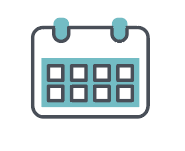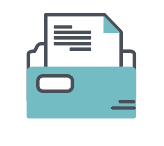
Proven Process
Investigative Process
Our investigative process is strategic, streamlined and thorough. The team at Van Dermyden Makus Law Corporation strives to keep our clients fully informed of the status of our investigations while underway, yet maintain sufficient independence to ensure there is no influence, or appearance of influence, on the investigative outcome.
Our team’s investigative process was established based on our extensive experience conducting thousands of investigations. This process ensures our investigations are timely, cost-effective, well-organized and fair. Here is an overview:
1. Intake & Assignment
Speak with client to conduct initial intake
Determine investigative needs
Assign attorney-investigator based on unique needs of client and matter
Finalize engagement agreement
2. Assessment & Planning
Learn about organization, including its culture, practices, and policies
Determine scope and nature of investigation
Create investigative plan
Determine interview logistics, such as confidentiality admonitions, recordings, scheduling, sequencing, location, and notifications
3. Evidence Collection
Conduct party and witness interviews by videoconference*
Identify and obtain all available evidence, to include documentary and digital evidence
Strategize and update investigative plan as necessary
4. Client Communication & Report
Strategic communications with client, while maintaining independence
Determine method of delivery of evidence and findings
Reach reasoned conclusions based upon a sound methodology and thorough analysis
Utilize credibility factors in reaching conclusions
Prepare Investigative Report, if requested
Report Writing Process
Our reports are comprehensive, accurate, and easy to navigate. To achieve this, all reports go through three phases of review. The multiple steps in this review process ensure that the report is accurate, neutral and unbiased. This process was established to guarantee that we come to fair, reasoned conclusions that our clients can trust.
1. Attorney-Investigator
Right-size the report in line with the client’s expectations
Summarize findings early in the report and provide a roadmap for the rest of the report
Determine which evidentiary documents to cite, quote, or summarize
Sustain or do not sustain the allegations
2. Senior Partner
Review draft report using extensive employment litigation experience
Ensure accuracy and neutrality
Assess credibility assessments, analysis and findings
3. Case Editor
Review the draft report for typographical errors, spelling, factual accuracy, flow, and formatting
Ensure consistency throughout the report in dates, names, punctuation, and titles
Ensure evidentiary documents are cited and attached to the final report when appropriate
4. Client
Draft report submitted to the client for review
Provide technical edits to the draft report unrelated to the substantive findings
Rely upon the report to demonstrate your good-faith actions in responding to the claim








